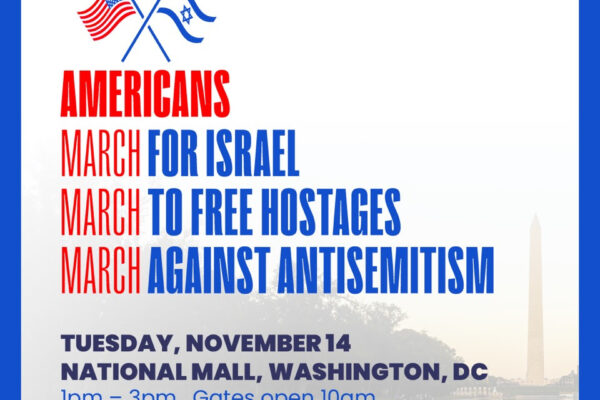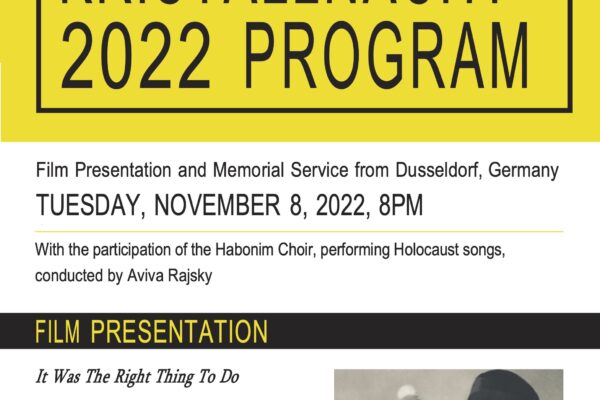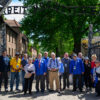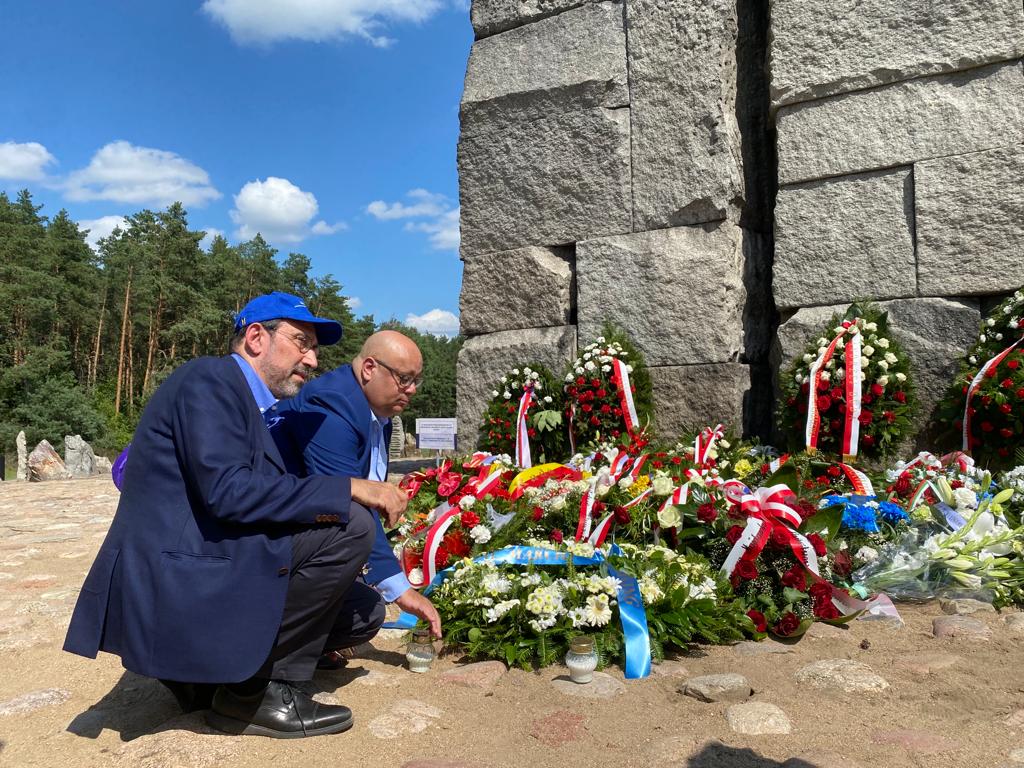
Michel Gourary and David Abadi at the commemoration event in Treblinka
The heroic uprising at the Treblinka death camp took place today, August 2nd, 1943, 79 years ago. The uprising was led by some 1000 Jewish prisoners, who prepared it for months in advance. During the revolt, the Jewish prisoners blew up the crematorium and weapons arsenals, thus stopping Nazi Germany’s killing machine with their own brave hands, leading to the closure of the camp at which approximately 870,000 people were murdered – almost all Jews.
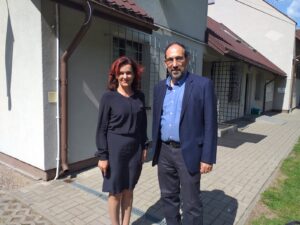
Michel Gourary with Gabriela Morawska – Stanecka, Deputy Speaker of the Senate of the Republic of Poland
The camp, made mainly of wooden sheds (excluding the gas chambers), burned down during the uprising, and most of the rebels lost their lives. About 200 prisoners managed to flee the burning camp to the nearby forests – but by the time the Red Army reached the area, only some 70 remained alive.
A memorial ceremony attended by Polish officials, Holocaust survivors and the Jewish community took place in Treblinka today with representatives of the International March of the Living who saluted the valor of the camp rebels and light a candle in memory of the dead.
One of the survivors, Samuel (Igo) Willenberg, told the story of the uprising and the unbearable life at the camp in his memoir, “Revolt in Treblinka”. Igo passed away in 2016, the last survivor of Treblinka. This is his testimony:
“Construction of a new structure began at the camp in the spring. The prisoners suspected it to be a new gas chamber, as the structure had no windows. They later discovered that it was a weapons arsenal. When construction ended, one of the prisoners – a metalworker – was asked to install a lock on the heavy metal door. He created a lock, gave one set of keys to the Germans and retained a copy of the set for himself. On the day of the revolt, the prisoners broke into the arsenal and stole the weapons, using them to shoot and kill many of the guards and to escape the camp.
We broke out, cut the phone lines and set fire to the sheds and storage rooms that we doused with gasoline earlier. The sentries left the towers, as planned. At first, the Ukrainian guards did not understand what they were seeing. Some fled and hid while others opened fire. We turned to them and shouted: “Niya Strilat, Nashel Kunietz Vini!” (Don’t shoot, the war has come to an end!). The sheds were already on fire at that point.”
In his testimony, Willenberg says that once the shot was fired, announcing the uprising, the camp was in mayhem, enabling him to escape. While escaping, he saw his campmates being apprehended and murdered by the Germans and he suffered a bullet to the leg, but he did not stop running.
“My group also grew smaller as we ran. When we finally arrived in the forest, we discovered that only four of our group managed to run the 15 km. We entered the forest with gunfire behind us. We stayed in the same place for two days, with no food and nothing to drink. All we had was wild berries that grew on the shrubs above us. We chewed them and they caused us pain. Around us were Germans and police officers. They closed in on the fugitives more and more….
We understood that they discovered and killed some of the fugitives. We were getting exhausted… we decided to set out at night and head for the virgin forests. …We got to the river that crossed the forest. We lied on the ground, sipped the cool water and bit into the bread. We then swam across the river and entered the virgin forest. It was pouring rain and we rushed to cut down branches to build a small shelter. From that moment on, we considered ourselves free… of the four of us, I am the only one alive.”
After many days of hiding in the forest, Willenberg managed to reach a Polish village, where he was helped by the locals who tended to his wounds and showed him where he could hide. Once he recovered, he continued to Warsaw, where he reunited with his father, joined the Polish Resistance and, a year later, took part in the 1944 Polish uprising in Warsaw.
Samuel is a model of courage and bravery. Despite the hardships that he encountered, the fear of being caught, the memory of his murdered sisters and his physical condition – he did not give up, continued on his heroic path of resistance, and even returned to fight again in order to free Jews from the camps.
We, at the March of the Living, preserve the stories of the survivors and of those who were murdered during the Holocaust.
That is why every year thousands of March of the Living students include Treblinka on their visit to Poland, where they commemorate the lives and deaths of so many who were deported to this horrific site of mass murder.
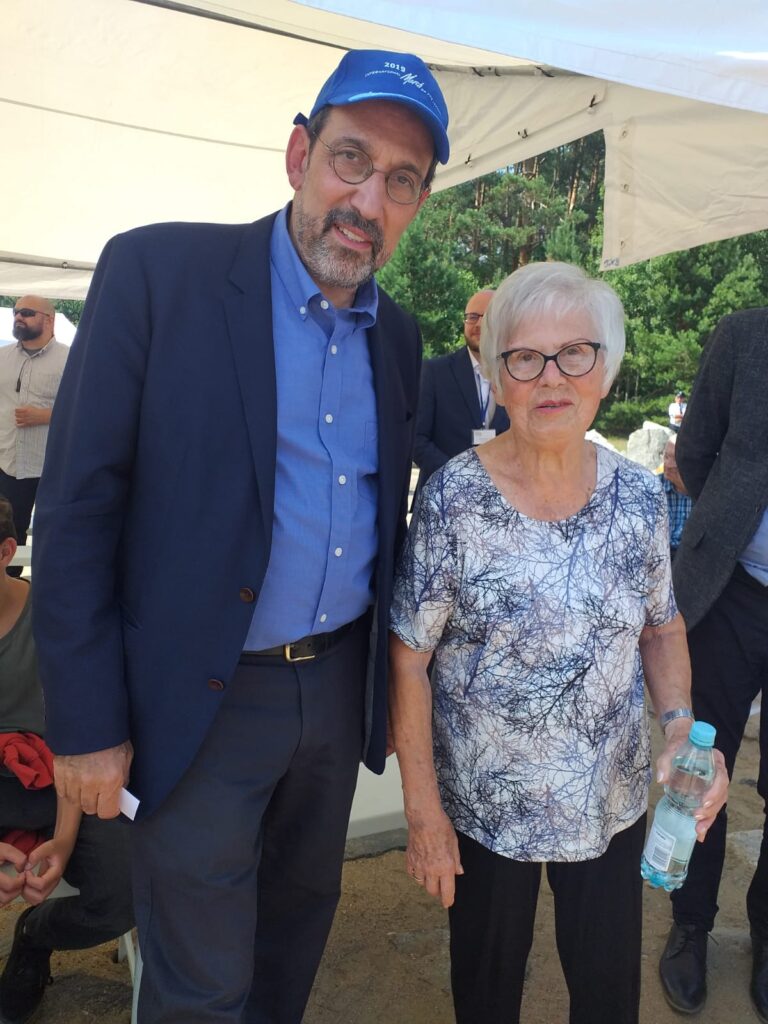
Michel Gourary with Ada Willenberg, Holocaust survivor and the widow of the Holocaust survivor Samuel Willenberg
Holocaust survivor, Ada Willenberg, the widow of Samuel Willenberg, who in March 1943 escaped the Warsaw Ghetto a few months before its destruction, came from Israel to speak at the commemoration event in Treblinka.
Michel Gourary, representing the International March of the Living (IMOTL) at the Treblinka commemoration, met Ada Willenberg, and praised her for her courageous perseverance, and for sharing her story and that of her late husband.
Every year IMOTL hosts thousands of high school students, Jews and non-Jews alike from all four corners of the globe, on the annual March of the Living from Auschwitz and Birkenau on Yom Hashoah/Holocaust Remembrance Day. Throughout the year MOTL also organizes local Marches in memory of Jews who were murdered in different capitals of Europe during the Holocaust.
Ada Willenberg strongly encouraged the International March of the Living to continue with its educational activities, and to pass on the legacy of Holocaust survivors to the next generation.
